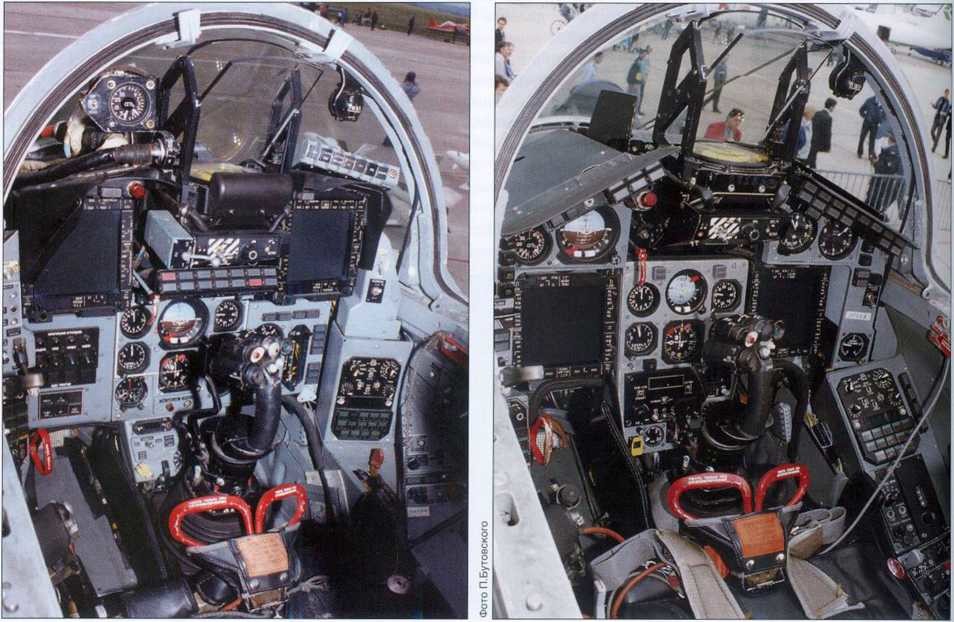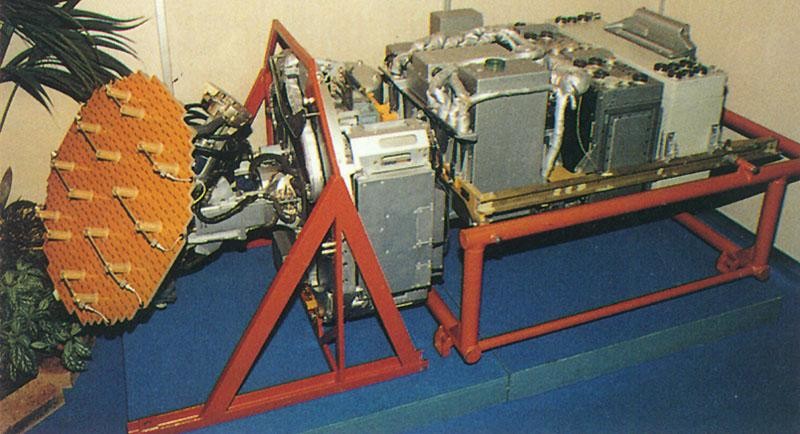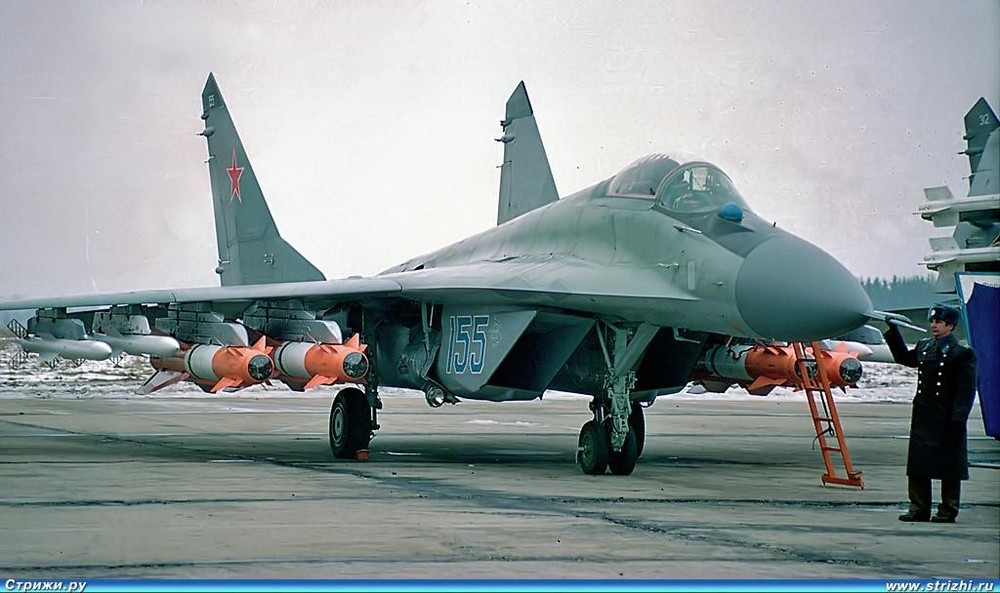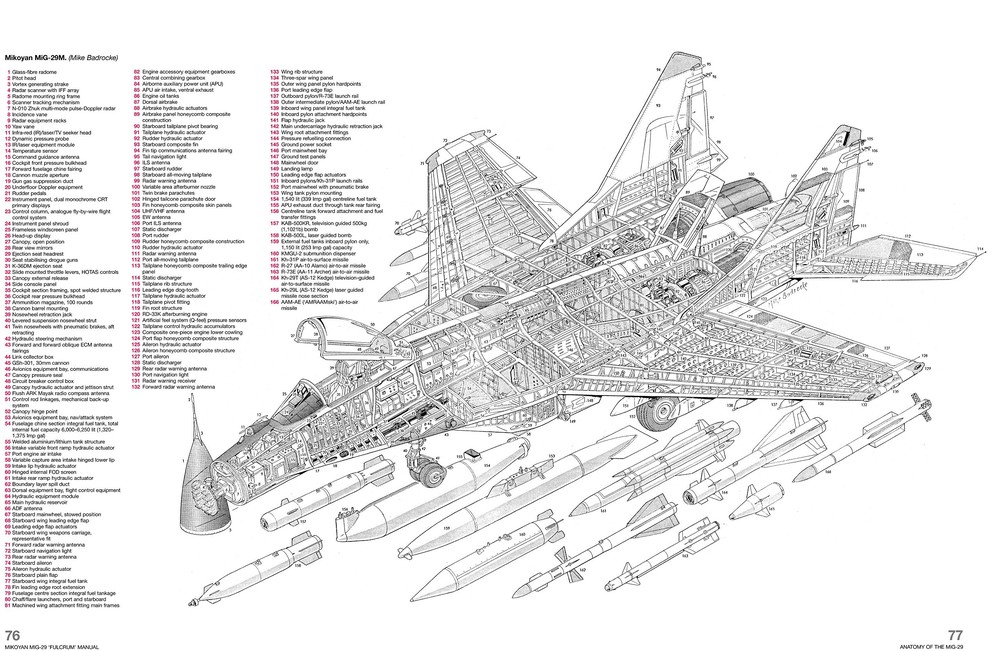-
Posts
933 -
Joined
-
Last visited
Content Type
Profiles
Forums
Events
Everything posted by Seaeagle
-
Agreed but.. The question is if it should even be possible to launch an R-77 through the original radar routine. From descriptions of the modified N019 and N001 radars, indications are that R-77/RVV-AE compliance is achieved only via the add-on "SNP2" mode specifically for the purpose, which as far as I can tell is a completely separate routine and one that may not even include an SST submode(since the weapon doesn't need it). If this perception is correct, its a case of a somewhat simplistic implementation, where the add-on radar routine exists in parallel with the original one rather than being integrated with it and e.g. automatically activated when the selected weapon is an R-77.
-

R-77-1 chances with improved battery and lofting?
Seaeagle replied to Hodo's topic in DCS: Flaming Cliffs
We are all entitled to have an opinion . -

R-77-1 chances with improved battery and lofting?
Seaeagle replied to Hodo's topic in DCS: Flaming Cliffs
Not really what?. I didn't say improved signal processing alone couldn't account for better range performance. What I said was that in absense of documentation for the actual performance, you are going to have a hard time pursuading ED to make any changes. You could perhaps have a case if the composition of the radar was changed significantly, but since it pretty much remains the same, there is nothing tangible to work with. -

R-77-1 chances with improved battery and lofting?
Seaeagle replied to Hodo's topic in DCS: Flaming Cliffs
Do we have MiG-29SM in DCS? - no we don´t. So what you are saying is that you want another MiG-29 version than the one we have - fair enough but that has nothing to do with making realism changes to the existing one. -

R-77-1 chances with improved battery and lofting?
Seaeagle replied to Hodo's topic in DCS: Flaming Cliffs
You missed the point - namely that its not a matter of whether they can change it, but rather whether there is sufficient evidence that it should be changed. I seriously doubt that - in fact I seem to remember Chizh once saying exctly that they didn´t have much info on the N019M. That is of course another possible reason You are talking about two different things - introducing the R-77-1 as a new weapon in DCS and modifying an existing aircraft entity. In the first case there is only trivial information available on the R-77-1 and you could argue that there would be little reason for ED to "wing it", when the current Russian planes of 80ies and 90ies "vintage" in DCS don´t support it. In the second case, it dosn´t matter whether an N019M1 would physically fit into the sim´s 1991 MiG-29S - as far as I am concerned an aircraft in DCS should have the radar that the real aircraft has. -

R-77-1 chances with improved battery and lofting?
Seaeagle replied to Hodo's topic in DCS: Flaming Cliffs
Possibly yes, but I have never been able to find any real documentation for the original N019M and I can well imagine that this is the reason why ED is reluctant to make range adjustments for it in DCS. At the very least there would need to be something tangible to support the claim of increased radar range, such as a change to the antenna design/technology, or/and new emitter of increased power or something like that, but as I mentioned earlier, that did not appear to be the case - only a new data processor and an extra "add-on" mode specifically for employing the R-77. -

R-77-1 chances with improved battery and lofting?
Seaeagle replied to Hodo's topic in DCS: Flaming Cliffs
That is not the N019M of the MiG-29S being described though, but rather a more recent upgrade proposal called N019M1, which as the text says, involves replacement of multiple components. The MiG-29S we have in DCS used the original N019M from around 1991-92, which was a very modest upgrade to the N019 and e.g. didn´t have any air-to-ground modes at all. -

R-77-1 chances with improved battery and lofting?
Seaeagle replied to Hodo's topic in DCS: Flaming Cliffs
Why? - AFAIK the N019M uses the same antenna, emitter and analogue signal processor as the baseline N019, while only the digital data processor was upgraded( in part to support the extra SNP-2 mode for R-77 employment). All I have seen on this are some vague claims of very modest range improvement in the order of some 5-10% increase supposedly due to improved S/N ratio/increased processing power. The 9.13 uses the same N019 radar as the baseline 9.12, so how is a manual for the 9.13 relevant for the 9.13S and its N019M radar? -

Semi-clickable flaming cliffs and future FF modules
Seaeagle replied to upyr1's topic in DCS Core Wish List
A few years back, all the FC3 planes got new updated 3D cockpits with lots of animated elements - I guess as provision for possible future FF modules, but mostly inactive in FC3. I am not familiar with the mod in question, but it looks like what they did was to make clickable overlays for the FC3 aircraft, tying existing functions(otherwise only accessible via the keyboard) to those "dormant" cockpit animations. Why ED didn´t do that themselves I don´t know - its an obvious way of making the "low fidelity" FC3 aircraft more interesting and enjoyable, so the only reason I can think of is that they want to maintain a clear distinction between FC3/MAC and Full fidelity modules with "clickability" reserved as an "advanced" feature only for the latter. -

would a upgraded NATO MiG-29 or Su-25 be possible
Seaeagle replied to upyr1's topic in DCS Core Wish List
Of course these things improve the operational usefulness considerably and make the MiG-29 more adaptable to NATO doctrine and tactics - thats why they were implemented :) . But retaining the original WCS/radar and armament, its still just half the package and in no way makes the aircraft "on par" with the late Viper and Hornet versions of DCS. So I guess it depends on your preferences . Whether you prefer the same route for the MiG-29 as ED took with the Viper and Hornet - i.e. 80'ies "legacy" fighters upgraded with whatever new equipment they could (get the documentation on to) stuff in or prefer them in a configuration closer to their original design for historical scenarios. -

would a upgraded NATO MiG-29 or Su-25 be possible
Seaeagle replied to upyr1's topic in DCS Core Wish List
There really is no such thing - upgrades performed to these aircraft in NATO service usually don't involve improvements to combat systems/armament, but merely practical items such as navigation and radio equipment, which doesn't make them on par with the late Viper and Hornet versions we have in DCS. -
You are welcome :) . There were a few extra tidbits I wanted to add - e.g. I remember some information about the new enhanced aerofoil design of the wings, but as you can see, it was not in that article, so I must have read about that elsewhere. I will add it later if I can find it again. BTW in your opening post, you asked about weight figures and G-limit. The weights seem to be practically the same for the MiG-29M and -29K - at least the max. TOW is stated as some 22400 kg for both, while I remember reading that, for the MiG-29K, the normal TOW is 17700 kg and the dry weight is some 12800 kg. AFAIK the max G-limit for the MiG-29M is 9, while its 8 for the MiG-29K. The MiG-29K had "bigger wings" - i.e. the outer foldable section is longer(the wingspan grew to 11.99 m and the total wing area to some 42m2), so I guess the lower G-rating of the MiG-29K is due to higher wing loading.
-
Ok I finally managed to find the time to complete the rewrite. Its not perfect and there are a few passages I couldn't quite desipher, but I am a little hung up at the moment so I don't have time to improve it further. I have also added some pictures and and a little extra info when appropriate(e.g. a fuel comparison between 9.12 and 9.15). Anyway, here it is: Hope it was worth the wait
- 23 replies
-
- 10
-

-

-
Ok I found it. But my menory failed me a little. Its not in Russian as I recalled, but rather a Russian article that has been machine-translated into English with all the jibberish that entails and what I remembered as an effort to "translate" it, was actually an effort to clean it up and rewrite it in proper English. So give me a little time to complete that and I will post it here.
-
Heh yeah and it may not even need to be added. Pr. 775 was in Flanker 2.0 and I wouldn't be surprised if the entry(CLSID) remains in the code and just needs to be reactivated with an associated lua script......at least that was possible in DCS previously.
-
I have an old article in Russian on the development of the MiG-29M(9.15), that I started translating once - I will see if I can find it. its quite comprehensive and gives a pretty good account for all aspects of the aircraft.
-
Yes but IIRC it was actually a little the other way around - namely that there was a requirement that the separate fighter and attack variants should be using a common airframe, which in turn meant having to make compromises and thus loosing the advantage of having two separate versions. So it was decided to merge them into a single type for both mission types, which as you said, had become possible with the advances in electronics. Yes especially the F-15(and F-14), but to a little lesser extend the F-16, which from the start had some secondary A/G capability. But anyway, Assimata's confusion is quite understandable, since the application of the "F" vs. "F/A" designations is not always logical - e.g. "F-117"(a dedicated attack aircraft) and what about the F-35 and F/A-22 :).....the former was concieved as a multirole aircraft with an emphasis on attack, while the latter was designed as a direct replacement for the F-15 with the same "not a pound for air-to-ground" philosophy(i.e. pure air domminance platform) and apparently only got limited A/G capability and the "F/A" designation due to political critisim of excessive cost for a single role fighter. The F-16 didn't altough these days its used(in US service at least) primarily as a strike asset.
-
There is no post-launch control(datalink) of the missile if thats what you mean, so for proper employment the seekerhead needs to be cued to the target(which can be done by IRST, radar or helmet sight) and then acquire its own lock on it before being launched. When launch override is used, the seekerhead is looking dead ahead and will only be able to acquire something that passes into its FOV after launch, so its sort of a boresight employment with all the restrictions and low pk that entails.
-
Yeah I read some years ago that it was the intention to introduce a modernised and uprated version of the AL-31F as part of a major overhaul in connection with the decision to retain the Su-33 in service. I cannot remember the designation and specifics of it though and I don't know what the status is. AFAIK the canards on the Su-33 are only there to help directing the airflow around the wings in order to improve controllability at low speed/high AOA carrier approaches. But like you said, more engine power could at least help to compensate for the extra weight(and drag?) of the Su-33 airframe compared with the Su-27.
-
Well its also a couple of pylons short :) . Anyway, if canards and TVC is to make it more interesting in BFM as you said, it would also need the flight dynamics for it - which could be a challenge(even if just "GFM").
-
Its possible I guess, but I doubt it. In the above article they quoted the representative of the plant calling it "Su-30SM" standard and then they started talking about the features of the Su-30SM. But "Su-30SM standard" could mean anything - i.e. being able "to fire anti-ship missiles" came as part of the -KN upgrade(with N001VE radar), while the Su-30K always had "air-to-air missiles" and "a jammer" :) . I don't know, but considering that those are fairly old second hand airframes, a cost effective -KN upgrade just seems more likely IMHO. Yes I know. Yes but perhaps Silver Dragon is right, that it would be better to introduce the Su-30SM as a new AI entry and just leave the current Su-30 as it is.
-
Yes a good suggestion. But IRL they are not using the same radar. As you said yourself, the Su-30KN was intended as a low cost upgrade for the basic Su-30 interceptor in the same way as Su-27S -> Su-27SM. So it involved an upgraded version(N001VE) of the original radar, with the option of upgrading it further with a PESA antenna(called "Pero"). The Su-30SM is basically a "russianized" Su-30MKI and, like you said, it has the N011M "Bars" radar - although IIRC the one in the Su-30SM was further developed(increased number of tracked/engaged targets).
-

investigating Thrust to weight ratio: confused
Seaeagle replied to bkthunder's topic in MiG-29 for DCS World
F-15C internal fuel capacity is 13860 lbs ~ 6286 kg. Su-27 internal fuel capacity is some 9300-9400 kg(!) So 59% ~ 5546 kg and has the same load as the F-15C at around 67 %. Its perhaps also a little unfair to include missile loads(design weight) for agility comparison since 8 AAMs for the F-15C would involve AMRAAMs, which are considerably lighter than R-27s. Anyway, I am not arguing with your points about agility - only the bit about the "normal fuel load" of the Su-27 being some sort of artificial figure to make it look better. Besides, it would probably be more appropriate to compare it to the MiG-29(more similar design philosophies), for which just about everything(overall size, dry weight, engine thrust etc) is a case of + 50% and the "normal fuel load" of the Su-27 is perfectly in line with that: MiG-29 at 100%: ~3500 kg Su-27 at 59%: ~ 5500 kg ....i.e. around 57% more. -

investigating Thrust to weight ratio: confused
Seaeagle replied to bkthunder's topic in MiG-29 for DCS World
Also known as "normal take-off weight". No it wasn't bies. Its refered to as "internal external fuel" because thats what it is - compare the amount to any other comparable fighter design. It was a design decision in connection with its intended role to take advantage of internal space for extra fuel instead of carrying it externally(no external tanks available for the Su-27) - less drag penalty, while freeing up external pylons for more weapons.





